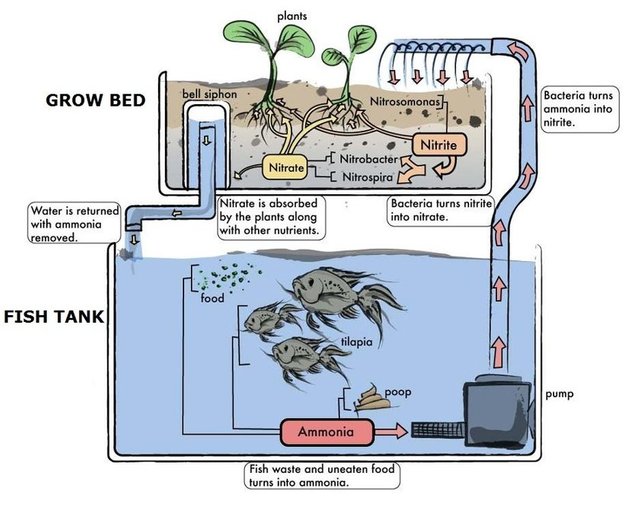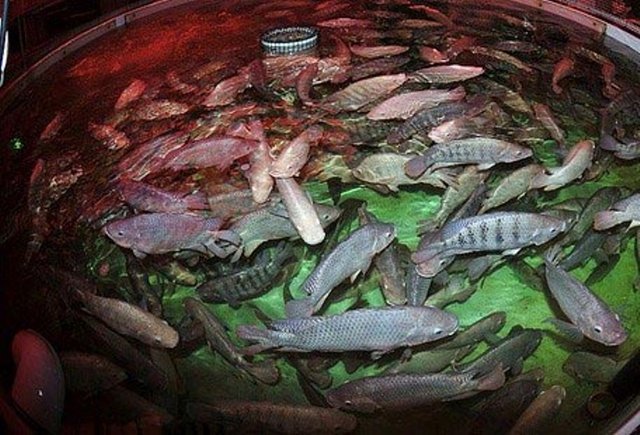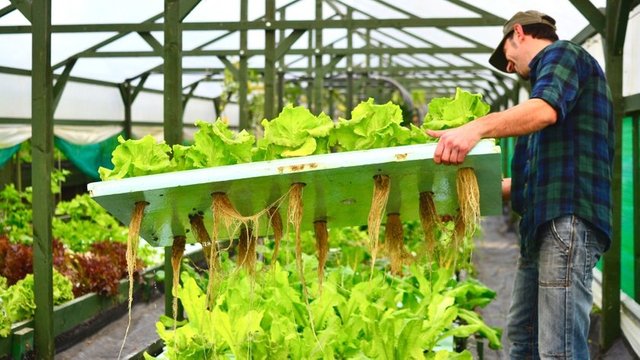Farming with Aquaponics: Growing Fish and Vegetables Together
What is Aquaponics? Aquaponics “refers to any system that combines conventional aquaculture (raising aquatic animals such as snails, fish, crayfish or prawns in tanks) with hydroponics (cultivating plants in water) in a symbiotic relationship”. [1]
Aquaponics consists of an integrated system or relationship between farmed fish and growing vegetables. Fish waste provides valuable nutrients to the plants while the plants, in return, absorb the the waste and clean the water for the fish. The fish will continuously receive fresh water filtered by the plants and the plants will continuously receive nutrients from the fish waste. Not only is this symbiotic relationship great for the fish and vegetables, it also provides a self-sustaining source of food with minimal upkeep.
Why bother creating an aquaponic system in the first place?
With traditional vegetable gardening methods there are many obstacles to overcome. Having enough land to plant a garden is the biggest obstacle. Not only do you need enough land you also have to cultivate it with a tiller or use a shovel and hoe. You also have to contend with crop destroying soil-born insects, constant weeding, soil composition, and knowing when and how much to water the plants. Let's not forget about the small animals that love infiltrating the garden as well.
There is a system of vegetable growing called hydroponics which eliminates many of the above mentioned problems but it creates new issues in return. In order to operate a successful hydroponic growing system you will need to use many store bought nutrients, chemicals, and other elements to mimic the nutrients found in soil. The chemical composition of the water in traditional hydroponic setups needs to be monitored closely and sometimes adjusted on a daily basis.
Aquaponics solves all of the issues associated with traditional soil gardening and hydroponic systems. With aquaponics there is no need to add man-made nutrients or other chemicals. All of the nutrients are provided by the fish.
What kind of fish can you use? Can you eat them?
There are several different varieties of fish that can be used in an aquaponics system. Tilapia is the most common fresh water fish used due to its mild taste and high protein. Other popular edible fish include trout, carp, catfish and large mouth bass. In colder environments the use of goldfish and koi are preferred due to their ability to withstand cold temperatures.
A sustainable aquaponics system can use just water or can be used in conjunction with soil beds or media. Soil beds may allow for capturing more nutrients from the fish waste and aid in the filtration of water that is to be reused by the fish.
This system of gardening actually uses much less water as compared to traditional soil-based gardens. Since the water is recycled, only small amounts of water have to be added to replace what is lost through evaporation. Aquaponics may eventually replace traditional gardening techniques in regions of the world where clean water isn't readily available for watering soil-based gardens or where water is subjected to limited use laws.
As the world's population continues to grow, and if food production slows due to drought or other natural disasters, aquaponics may be a viable solution for the world's food crop production.



Love it. Talk about efficiency.
I love the idea of aquaponics. It's an incredibly efficient system that gives people fresh food all year long. I really don't know why more people don't do this.
Very nice. I may try this. Thanks.
dubloon135
Great article
great article
after several years of a hydroponic greenhouse we're switching to aquaponics. Lots more upfront work but lots of fun
Aquaponics offers an innovative solution to traditional gardening challenges. By integrating fish farming with plant cultivation, it creates a sustainable ecosystem where fish waste nourishes the plants while they filter the water for the fish. This system not only maximizes space but also minimizes maintenance. If you’re intrigued by starting your own setup, check out our guide to aquaponic system. It provides insights on everything from selecting the right fish and plants to optimizing your setup for maximum yield. Dive into the world of aquaponics and discover its potential for efficient food production!